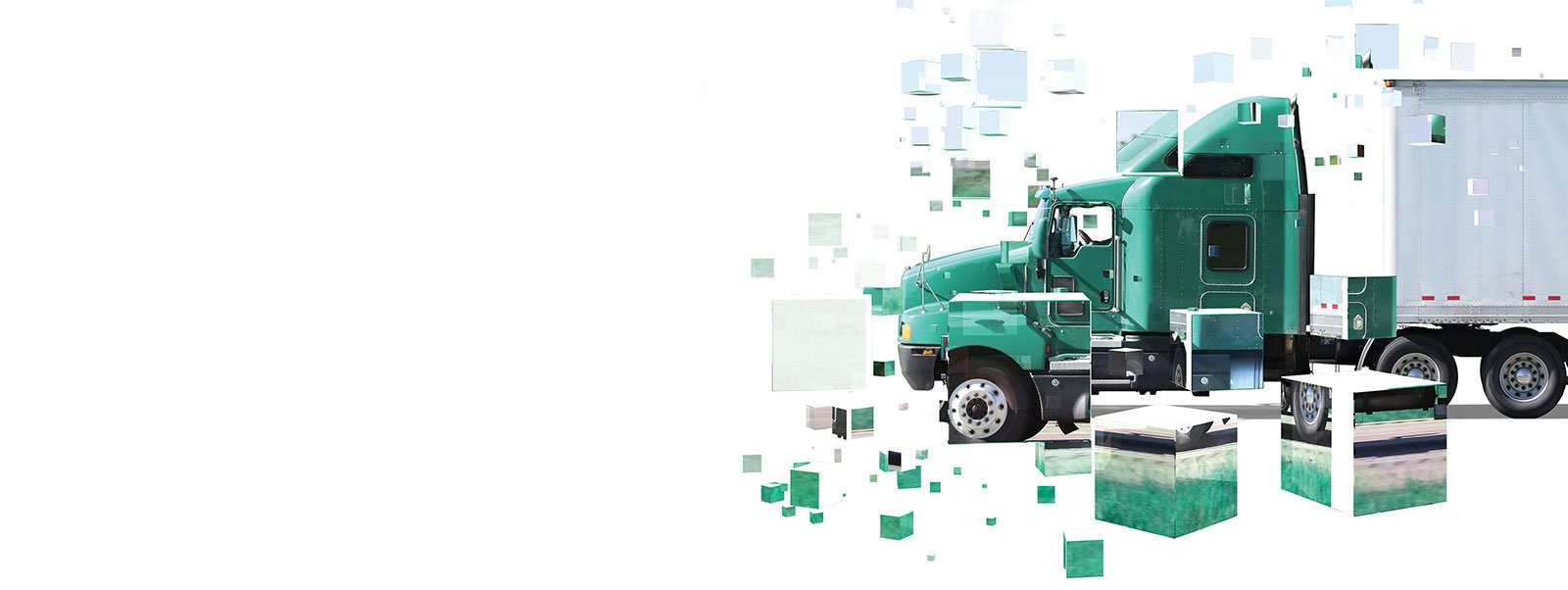Mobile application-based ride sharing services such as Uber and Lyft have revolutionized the urban taxi landscape in the past few years. Now, the idea of doing something similar to fill out trucks to full capacity is catching fire.
At least a dozen companies are in the hunt to develop and promote “smart trucking ” apps that provide an all-in-one solution for freight shippers and carriers: fast, automated load matching based on location and equipment; turn-by-turn route planning and shipment tracking; algorithm-based instant pricing; and seamless proof-of-delivery, billing, and payment. These apps are looking to replace fragmented and time-consuming legacy processes, such as the countless hours truckers often spend trying to find loads by calling freight brokers and checking load boards.
Many smart-trucking apps are being developed by technology companies that believe they can undercut the middleman fees charged by traditional freight brokers, while offering more comprehensive solutions. Thus much like the taxi industry, which is fighting back against ride sharing with its own streamlined apps (such as Hailo and Arro ), freight brokers will need to embrace “ uberization ” – or risk being displaced entirely.
Smart-trucking apps are the latest example of how digital innovations first developed for consumers can be applied to business
Smart-trucking apps are the latest example of how digital innovations first developed for consumers are jumping the gap to offer transformative solutions for business as well. On the motor carrier side, the use of smart apps could offer benefits such as lower operating costs, higher revenues, and better fuel efficiency and asset utilization. Most trucking companies are small (more than 90 percent of US trucking companies, for example, operate six or fewer units), and all-in-one apps could level the playing field between mom-and-pops and larger firms.
On the shipper side, larger app-based marketplaces should give small shippers more access to on-demand capacity, at price points that they can more easily control. And large shippers should be better able to manage “exception freight” that falls outside of their typical contract agreements, such as freight surges prior to holidays.
Across the supply chain, uberization promises to increase visibility and transparency for all stakeholders. New load-matching apps will unlock the excess capacity now hidden due to logistics inefficiencies and origin/destination imbalances, and could help offset the growing shortage of hundreds of thousands of truck drivers in the United States and Europe.
These apps also could generate disruptions that ripple across the supply chain as they evolve and their adoption expands. For example, companies with large private fleets of trucks – like a Tyson Foods or Albertsons – might be able to downsize to meet their average requirements, secure in the knowledge that smart apps could readily locate extra capacity when needed to meet peak demand. Equally, private fleets could sell their excess capacity into the market when their own demand is down.
Third-party logistics terminals and distribution centers could see new and changing demands, such as increased load sharing and load exchanges, which would enable truckers to optimize their schedules and routes and expand opportunities for small motor carriers to compete against large ones.
Eventually, the many different smart trucking apps in development could narrow down to just one or a few choices – meaning marketplaces with visibility across a large share of available loads and capacity, backed by all of the tools required to make booking , transporting, tracking, and payment as painless as possible. And as shippers and drivers become used to the immediacy and ease of use of mobile-based tools, even large trucking companies may need to modify their fleet and transportation management systems accordingly.
For the moment, the battle over who will reap the value of disruption in trucking is still up for grabs. Realizing that value will require not only embracing evolving technology, but also figuring out how to morph organizational and customer-facing structures in tandem (and soon). The choice is going to be as simple for trucking industry stakeholders as it has been for media, taxis, and retail shopping: They will need to put the pedal to the metal if they expect to stay in the fast lane.
This article first appeared in Forbes.


